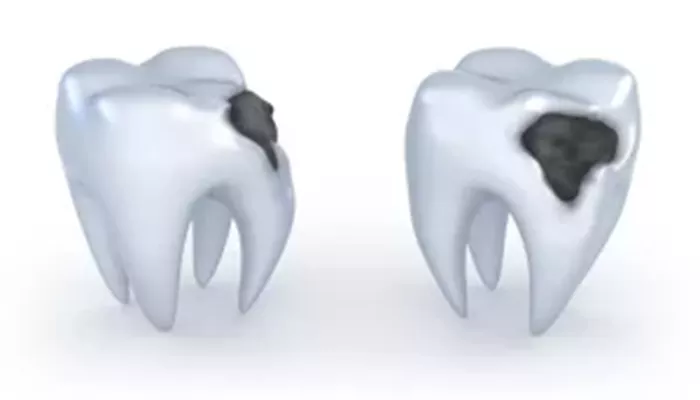Tooth decay, also known as dental caries, is a common dental issue that affects people of all ages. It occurs when bacteria in the mouth produce acids that erode tooth enamel, leading to cavities. If left untreated, tooth decay can cause pain, infections, and even tooth loss. Fortunately, there are effective treatments available for tooth decay. This article will explore the various cures for tooth decay, how to prevent it, and the importance of maintaining good oral health.
Understanding Tooth Decay
Tooth decay is a process that begins with the demineralization of tooth enamel. It usually starts with plaque formation, a sticky film of bacteria that forms on the teeth after eating. When we consume sugary or acidic foods, the bacteria in plaque produce acids that attack the enamel. Over time, this can lead to the formation of cavities.
Cures for Tooth Decay
The treatment for tooth decay depends on the severity of the decay. Here are the common cures for tooth decay at various stages:
1. Remineralization
In the initial stages of tooth decay, when only minor demineralization has occurred, the process can often be reversed through remineralization. This involves:
Fluoride Treatments: Fluoride is a mineral that helps strengthen tooth enamel and promotes remineralization. Dentists may apply fluoride treatments in the form of gels, foams, or varnishes to help restore minerals to the enamel.
Fluoride Toothpaste: Using fluoride toothpaste at home is essential for maintaining enamel health. Brush twice a day to help prevent further decay.
Dietary Changes: Consuming foods rich in calcium and phosphorus can also support remineralization. Dairy products, nuts, and leafy greens are excellent choices.
2. Fillings
If tooth decay progresses and a cavity forms, the most common treatment is a filling. This procedure involves:
Removing Decayed Material: The dentist will numb the area and remove the decayed portion of the tooth using a drill or laser.
Filling the Cavity: After cleaning the cavity, the dentist will fill it with a material such as composite resin, amalgam, or glass ionomer. This restores the tooth’s structure and function.
Shaping and Polishing: Once the filling is in place, the dentist will shape and polish it to ensure a comfortable bite.
3. Crowns
For more extensive decay that affects a large portion of the tooth, a crown may be necessary. A crown is a custom-made cap that covers the entire tooth. The process involves:
Preparing the Tooth: The dentist will remove any decayed material and reshape the tooth to accommodate the crown.
Taking Impressions: Impressions of the tooth will be taken to create a custom crown that fits perfectly.
Placing the Crown: Once the crown is ready, it will be cemented onto the prepared tooth, providing strength and protection.
4. Root Canal Treatment
If tooth decay reaches the pulp and causes infection, a root canal may be necessary. This procedure involves:
Removing Infected Tissue: The dentist will numb the area and remove the infected pulp tissue from the tooth.
Cleaning and Disinfecting: The inner chamber of the tooth will be cleaned and disinfected to remove any bacteria.
Filling the Tooth: After cleaning, the tooth will be filled with a biocompatible material to seal it.
Placing a Crown: In many cases, a crown will be placed on the tooth to restore its function and appearance.
5. Tooth Extractions
In severe cases where the tooth is extensively decayed and cannot be saved, extraction may be necessary. This involves:
Numbing the Area: The dentist will numb the area around the tooth to minimize discomfort.
Removing the Tooth: The dentist will carefully remove the tooth from its socket. After extraction, the dentist may discuss options for replacement, such as dental implants or bridges.
Preventing Tooth Decay
Preventing tooth decay is crucial for maintaining good oral health. Here are some effective strategies:
1. Maintain Good Oral Hygiene
Brush Twice a Day: Use fluoride toothpaste and brush for at least two minutes, focusing on all surfaces of the teeth.
Floss Daily: Flossing removes plaque and food particles from between the teeth, where a toothbrush cannot reach.
2. Regular Dental Check-Ups
Visit your dentist regularly for check-ups and cleanings. Professional cleanings can remove tartar buildup, and your dentist can identify early signs of decay.
3. Healthy Diet
Limit sugary snacks and beverages. Instead, focus on a balanced diet rich in fruits, vegetables, whole grains, and lean proteins. Foods high in calcium and phosphorus can help strengthen teeth.
4. Use Fluoride
Fluoride strengthens enamel and helps prevent cavities. Use fluoride toothpaste and consider fluoride treatments from your dentist.
5. Dental Sealants
Dental sealants are protective coatings applied to the chewing surfaces of back teeth. They can prevent cavities by sealing out food particles and bacteria.
6. Educate Yourself and Others
Understanding the importance of oral health can help you and your family make better choices. Teach children about proper brushing and flossing techniques, and encourage them to develop healthy habits early.
Conclusion
Tooth decay is a common but preventable condition that can lead to significant health issues if left untreated. Fortunately, there are effective cures for tooth decay, ranging from remineralization techniques to fillings, crowns, root canals, and extractions. The appropriate treatment depends on the severity of the decay.
Maintaining good oral hygiene and visiting the dentist regularly are essential for preventing tooth decay. By taking proactive steps to protect your teeth, you can enjoy a healthy smile and overall well-being. If you notice any signs of tooth decay, such as sensitivity or discoloration, do not hesitate to consult your dentist. Early intervention is key to successful treatment and maintaining optimal oral health.
Related topics:

